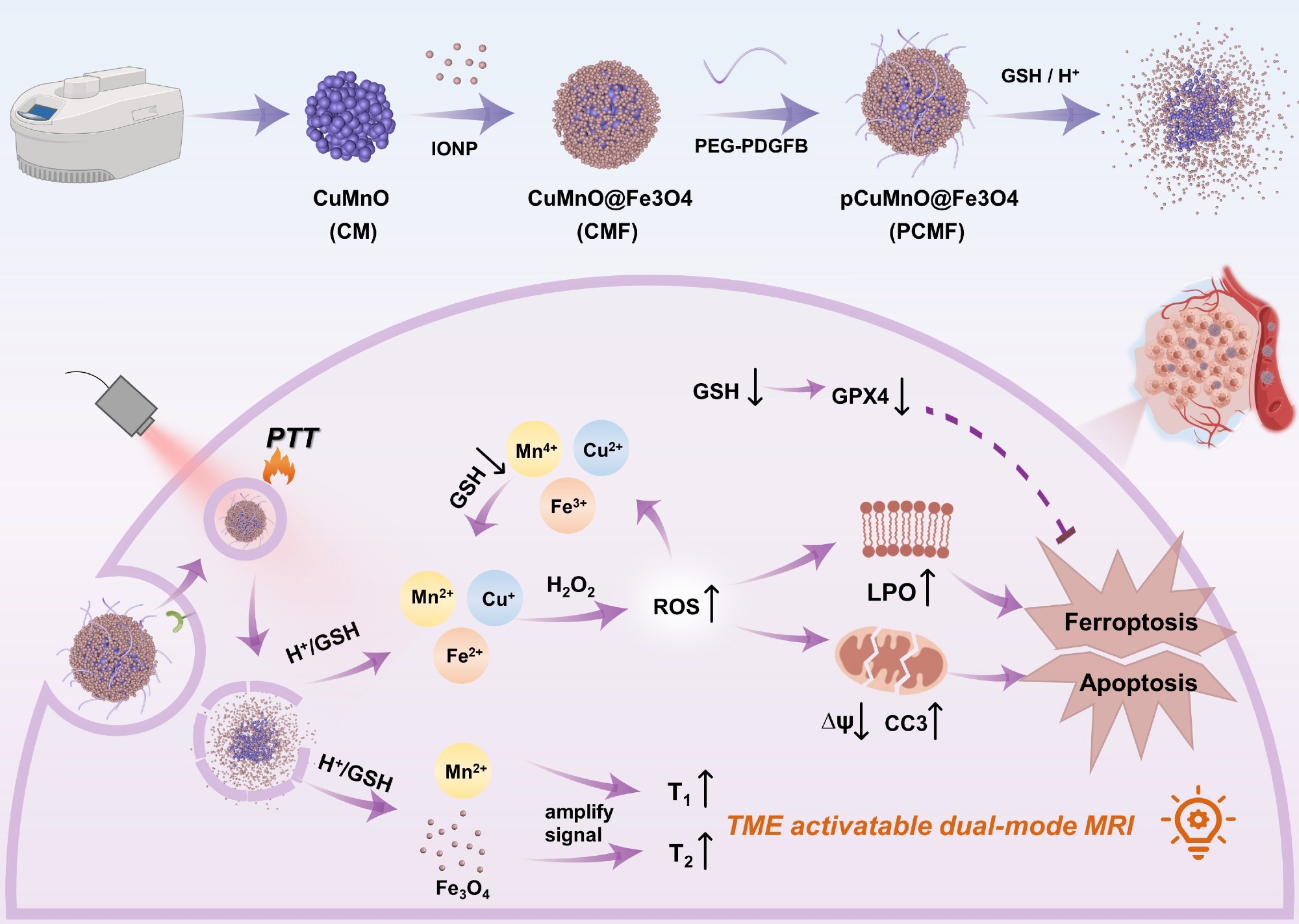A nanostructure enhancing tumor detection and treatment has been developed by a research team led by Prof. Zhengyan Wu at the Hefei Institutes of Physical Science, Chinese Academy of Sciences, in collaboration with Binzhou Medical University.
 Schematic illustration. (Image Credit: Wenteng Xie).
Schematic illustration. (Image Credit: Wenteng Xie).
Their research, recently published in the journal Small, is centered around devising a highly specific approach for diagnosing and treating tumors through a combination of magnetic resonance imaging and enzyme activity.
The key focus of their work involves utilizing a particular chemical reaction known as the metal ion-mediated Fenton-like reaction.
This reaction can rapidly elevate the levels of detrimental reactive oxygen species, thereby impeding tumor growth. However, the challenge lies in the instability of copper-based nanozymes, despite their high catalytic activity and responsiveness to the tumor environment.
Hence, the creation of a core-shell nano-theranostic agent responsive to the tumor microenvironment serves the dual purpose of facilitating early tumor diagnosis and monitoring treatment efficacy. Simultaneously, it provides protection against the deactivation of copper-based nanoenzymes caused by steric hindrance.
To tackle this challenge, the research team devised a specialized nanoenzyme named CuMnO@Fe3O4 (CMF), featuring a core-shell structure attuned to the tumor microenvironment.
Subsequently, they affixed ligands recognizing platelet-derived growth factor receptor-β (PDGFB) to the CMF surface, resulting in the formation of a tumor-specific nanoenzyme named PCMF.
The core-shell architecture of PCMF effectively shields it from interference by thiol groups present in large molecules during circulation in the bloodstream. This fortification contributes to an intensified anti-tumor activity exhibited by PCMF.
Activated by weak acid and glutathione, PCMF demonstrates dual contrast imaging capabilities in both T1 and T2. This dual functionality allows for heightened imaging contrast, significantly enhancing the accuracy of tumor diagnosis.
Moreover, within the tumor microenvironment, PCMF undergoes degradation, liberating metal ions and ultrafine iron oxide.
This degradation process consumes glutathione, thereby expediting Fenton and Fenton-like reactions. The ensuing increase in intracellular reactive oxygen species levels leads to apoptosis and ferroptosis in cancer cells, amplifying the therapeutic impact of PCMF.
Additionally, PCMF possesses the ability for photothermal conversion, enabling its application in combined photothermal and nanocatalytic therapy to augment anti-cancer efficacy.
The findings of this study offer valuable insights into realizing highly sensitive tumor-specific therapeutic diagnoses, as highlighted by the research team.
Journal Reference:
Xie, W., et al. (2023) Tumor Microenvironment–Activated Nanostructure to Enhance MRI Capability and Nanozyme Activity for Highly Tumor-Specific Multimodal Theranostics. Small. doi.org/10.1002/smll.202306446